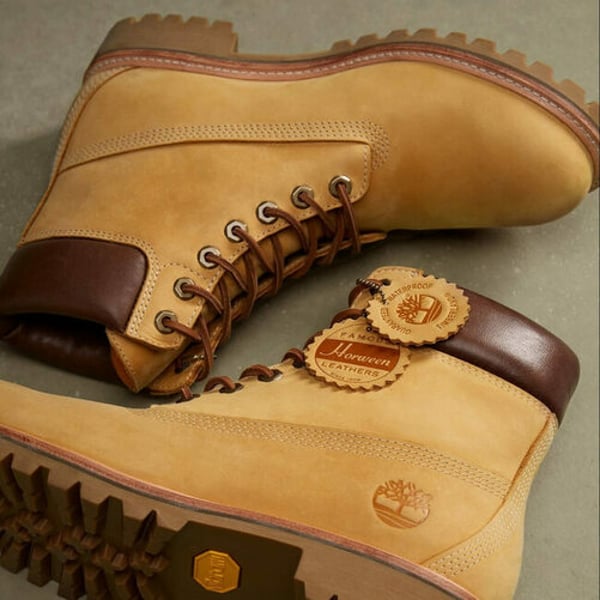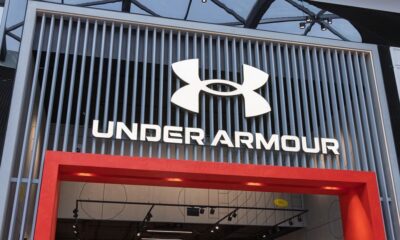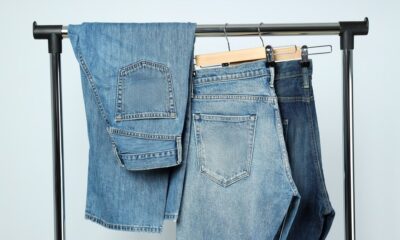Fashion
Bangladesh plans to boost apparel exports to Japan

For apparel-producing countries, Japan’s expanding market presents an attractive opportunity, and Bangladesh, one of the world’s leading garment exporters, is increasingly seeking to strengthen its foothold in this market.
With Japan reportedly reducing its reliance on China, Bangladesh apparel exporters see an opportunity to boost RMG exports to Japan.
The ongoing Bangladesh–Japan Economic Partnership Agreement (EPA), expected to conclude by the end of 2025, which aims to lower tariffs and ease trade processes, is expected to give a further boost to Bangladesh’s exports to the lucrative Japanese market.
Bangladesh apparel makers are turning their focus towards Japan at a strategic time. With negotiations for a Bangladesh–Japan Economic Partnership Agreement (EPA) already underway and expected to conclude by the end of 2025, both nations are seeking to deepen their trade and investment ties. The EPA aims to create a framework that would lower tariffs, simplify trade procedures, and facilitate greater market access for Bangladeshi products.
For Bangladesh, the economy of which relies heavily on readymade garments, the EPA represents an opportunity to expand exports and diversify beyond its traditional export strongholds of the United States and the European Union.
Industry leaders believe that with the EPA, rising Japanese interest in the China Plus One sourcing strategy, and Bangladesh’s increasing focus on quality and sustainability, the country now stands at a pivotal moment to increase its apparel exports to Japan.
Even though China remains Japan’s largest supplier of apparel, its dominance has been gradually eroding. Estimates suggest that China’s share in Japan’s apparel imports dropped from over 55 per cent in 2022 to about 46.88 per cent in early 2025.
Interestingly, this decline has not been accompanied by a fall in Japan’s total apparel imports, indicating that Japanese retailers are not cutting back on demand but are instead diversifying their sourcing networks.
The growing interest in the ‘China Plus One’ strategy—under which Japanese companies seek to reduce dependence on China by sourcing from alternative locations—has positioned Bangladesh as a viable and competitive option for sure even if Bangladesh’s apparel exports to Japan have also shown consistent growth over the past few years, reflecting both the shifting dynamics in Japanese sourcing and Bangladesh’s increasing competitiveness.
As per some estimates, Bangladesh’s exports rose from $944.82 million in the fiscal 2020–21 to $1.41 billion in 2024–25, while industry observers noted that this upward trajectory highlights a strong foundation for further expansion, particularly as Bangladeshi manufacturers invest in quality and value-added production to meet Japanese standards.
The Japanese fashion market is often described as one of the most challenging in the world, with consumers who value craftsmanship, attention to detail, and durability over mass-produced, low-cost alternatives.
This presents both a challenge and an opportunity for Bangladeshi exporters. “Japan’s fashion market is unique in the sense that gaining Japanese buyers’ trust is not that easy,” said one apparel manufacturer, adding, “The market is driven by a sophisticated consumer base that values craftsmanship, and the emphasis on quality is extremely high. Long-term communication and consistent efforts are essential to building trust and successfully entering the Japanese market.”
To cater to such expectations, many Bangladeshi garment factories are enhancing compliance, upgrading technology, and focusing on sustainability—factors that align well with Japan’s growing preference for ethical and environmentally responsible production.
Japanese buyers, known for long-term partnerships once trust is established, often prioritise reliability and transparency across the supply chain and recognising this, Bangladeshi entities are working to strengthen their reputation through improved product standards, timely delivery, and investments in eco-friendly production processes.
Industry insiders believe that the combination of Japan’s sourcing diversification, the upcoming Economic Partnership Agreement, and Bangladesh’s improving manufacturing capabilities will open new growth opportunities in the lucrative Japanese market.
While challenges remain in meeting Japan’s stringent quality benchmarks and cultural expectations, the potential rewards are significant, and by demonstrating reliability, consistency, and commitment to sustainability, Bangladesh can position itself as a key partner in Japan’s apparel supply chain, claimed the industry insiders, to wind up on a positive note.
Fibre2Fashion News Desk (DR)
Fashion
Timberland opens first store in Detroit

Published
November 19, 2025
Timberland has opened its first retail store in Detroit.
The VF Corp.-owned brand opened the doors to its new 1,400-square-foot location at 1217 Woodward Avenue in Michigan, on Friday, with a full assortment of men’s and women’s footwear, apparel, and accessories, along with footwear for kids.
Notably, the footwear offering highlights some of Timberland’s most iconic silhouettes, including the 6-Inch Premium Waterproof Boots, Field Boots, Euro Hikers, and 3-Eye Handsewn Boat Shoes for men. Women’s selections highlight the 6-Inch Premium Waterproof Boots, Noreen Boat Shoes, and the brand’s new Stone Street collection. Apparel centres largely on outerwear.
Designed to reflect Timberland’s rugged-outdoors-meets-urban-utility aesthetic, the space is characterized by oak wood, brushed steel fixtures, textured concrete walls, and leather accents throughout.
The new flagship complements Timberland’s existing presence in the region, which includes an outlet store at Great Lakes Crossing in Auburn Hills. The opening follows a new retail store at Roosevelt Field in Garden City, New York, which made its debut in October.
VF Corporation’s revenue reached $2.8 billion in the second quarter of the 2026 financial year, rising 2% year over year, it announced on October 28. Timberland reported 7% growth to $506.4 million, during the quarter.
Copyright © 2025 FashionNetwork.com All rights reserved.
Fashion
UK’s Burberry H1 FY26 revenue slips, Q2 sales show signs of recovery

The gross profit rose to £701 million, while gross margin expanded sharply to 67.9 per cent from 63.4 per cent, an improvement of 450 basis points (bps) at reported rates (410 bps at constant exchange rates). The company attributed this largely to non-recurring inventory headwinds in the prior year, including provisioning and inventory exits.
Burberry’s H1 FY26 revenue fell to £1.03 billion (~$1.36 billion), though margins strengthened as gross profit rose and adjusted operating profit returned to £19 million (~$25.08 million).
Comparable sales stabilised, with Q2 growth of 2 per cent.
EMEIA and the Americas grew, while Greater China and Asia Pacific improved.
For FY26, Burberry expects retail space to remain broadly unchanged.
The adjusted net operating expenses fell 7 per cent at reported rates and 5 per cent at constant exchange rates to £682 million, reflecting the impact of the ongoing cost efficiency programme and the absence of prior year store impairment headwinds, partly offset by inflation and targeted investments, Burberry Group said in a press release.
As a result, the adjusted operating profit reached £19 million (~$25.08 million) in H1 FY26, compared with a £41 million adjusted operating loss a year earlier. The adjusted operating margin improved to 1.9 per cent from a negative 3.8 per cent, an uplift of 570 bps at reported rates.
Net finance expense increased modestly to £30 million from £27 million, leading to a loss before taxation of £48 million, an improvement on the £80 million loss a year earlier. The attributable loss to shareholders narrowed to £26 million versus £74 million. Adjusted loss before tax improved to £11 million from £68 million and adjusted diluted earnings per share moved back into positive territory at 0.6 pence, versus a loss of 18.3 pence in the prior year. Reported diluted loss per share narrowed to 7.1 pence from 20.8 pence.
The retail segment remained the core of the business, accounting for around 85 per cent of retail and wholesale revenue. Retail sales declined by 1 per cent at constant exchange rates and 3 per cent at reported rates in the half, but like-for-like sales stabilised overall and improved as the half progressed.
Retail revenue totalled £854 million, down from £885 million a year earlier. Wholesale revenue fell to £148 million from £169 million, a decline of 12 per cent at reported rates and 11 per cent at constant exchange rates, albeit slightly better than guidance for mid-teens declines due to phasing and improved in-season orders from strategic partners after stronger sell-out of the Autumn 25 collection. Burberry reiterated that it intends to operate a smaller, higher-quality wholesale business in future.
Europe, Middle East, India and Africa (EMEIA) grew 1 per cent for the half, with both quarters delivering 1 per cent growth, supported by resilient local customer spending that offset weaker tourism. The Americas rose 3 per cent in H1 (up 4 per cent in Q1 and 3 per cent in Q2), driven by new customer acquisition, offsetting weaker tourist traffic in the United States during the summer.
Greater China declined 1 per cent over the half but returned to growth in Q2, with sales moving from a 5 per cent decline in Q1 to a 3 per cent increase in Q2. Growth in local customers partially offset weaker outbound tourist flows.
Asia Pacific declined 2 per cent in H1 but improved sequentially, from a 4 per cent decline in Q1 to flat in Q2. South Korea was flat for the half (up 2 per cent in Q1 and down 2 per cent in Q2), while Japan declined 5 per cent overall but swung from a 10 per cent decline in Q1 to a 2 per cent increase in Q2.
By division, accessories revenue declined to £343 million from £367 million, down 7 per cent at reported rates and 4 per cent at constant exchange rates. Womenswear was broadly stable at £312 million, flat at reported rates and up 2 per cent at constant exchange rates. Menswear revenue declined to £304 million from £324 million, down 6 per cent at reported rates and 3 per cent at constant exchange rates. Children’s and other categories fell to £43 million from £50 million.
Burberry continued to refine its store portfolio while investing in elevated in-store experiences. The group opened four stores and closed eleven during the half, ending the period with 415 directly operated stores and 31 franchise stores.
The network included 225 full-price stores, 136 concessions and 54 outlets, with Asia Pacific and Greater China representing the largest store bases.
“One year into Burberry Forward, my belief in this extraordinary British luxury house is stronger than ever,” said Joshua Schulman, chief executive officer (CEO) at Burberry Group. “With the consistency of our Timeless British Luxury brand expression and an improved product offer, we have begun to see customers return to the brand they love, resulting in comparable store sales growth for the first time in two years. While it is still early days and there is more to do, we now have proof points that Burberry Forward is the right strategic path to restore brand relevance and value creation. We move forward with confidence that Burberry’s best chapters lie ahead.”
For FY26 Burberry is expecting its retail space to remain broadly stable, while wholesale revenue is projected to decline by a mid-single-digit rate. The company anticipates delivering £80 million in annualised cost savings in FY26, building on the £24 million achieved in FY25. Restructuring charges are forecast at around £50 million for the year as part of the ongoing transformation. Currency movements, based on spot rates as of October 24, 2025, are expected to create headwinds of about £50 million on revenue and £5 million on adjusted operating profit. Capital expenditure for the year is planned at approximately £120 million.
Fibre2Fashion News Desk (SG)
Fashion
India’s GDP growth projected at 7% in Q2 FY26, lower than Q1’s: ICRA

ICRA has projected India’s YoY GDP expansion to have eased to 7 per cent in Q2 FY26 from 7.8 per cent in Q1.
It also projected the gross value added (GVA) growth at 7.1 per cent in Q2 FY26 from 7.6 per cent in Q1.
Manufacturing GVA growth is expected to have risen to a six-quarter high of 9 per cent in Q2 FY26 (plus 2.2 per cent in Q2 FY25) from 7.7 per cent in Q1 (plus 7.6 per cent in Q1 FY25).
Source link
-

 Tech4 days ago
Tech4 days agoNew carbon capture method uses water and pressure to remove CO₂ from emissions at half current costs
-

 Politics6 days ago
Politics6 days agoBritish-Pakistani honoured for transforming UK halal meat industry
-

 Sports4 days ago
Sports4 days agoTexas A&M officer scolds South Carolina wide receiver after touchdown; department speaks out
-

 Business4 days ago
Business4 days agoThese 9 Common Money Mistakes Are Eating Your Income
-

 Business5 days ago
Business5 days agoWhat’s behind Rachel Reeves’s hokey cokey on income tax rises?
-

 Fashion6 days ago
Fashion6 days agoAdidas & Patrick Mahomes expand NIL programme with Texas Tech athletes
-

 Politics7 days ago
Politics7 days agoInternet freedom declines in US, Germany amid growing online restrictions
-

 Fashion5 days ago
Fashion5 days agoAfter London, Leeds and Newcastle, next stop Glasgow for busy Omnes


















